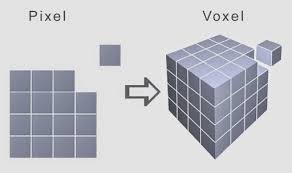Module 2 - Digital Imaging Concepts: Matrix, Pixel, FOV, ADC, Quantization, Scanning, and EI/DI
1/41
Earn XP
Description and Tags
A comprehensive set of flashcards covering matrix/pixel/FOV, preprocessing, ADC, quantization, scanning, and EI/DI concepts in digital imaging.
Name | Mastery | Learn | Test | Matching | Spaced |
|---|
No study sessions yet.
42 Terms
What determines pixel size?
The size of the matrix in relation to the FOV.
In CR, what changes FOV size?
The size of the cassette.
In DR, what determines fixed FOV?
The size of the detector (e.g., 43 × 43 cm).
What happens to resolution when pixel size decreases?
Spatial resolution increases.
What factor determines resolution in DR?
DEL (Detector element) size.
What is a DEL called when capturing signal?
Dexel.
What does a dexel become after processing?
A monitor pixel.
What do FOV and DEL size together determine?
The matrix size.
What does ADC stand for?
Analog to Digital Converter.
What does ADC do?
Converts analog signals to digital.
What is quantization?
Assigning brightness values to pixels.
What is sampling?
Measuring brightness levels of each pixel.
What is scanning?
Dividing the image into numbered pixels.
Which device performs sampling in CR?
Photomultiplier tube.
What determines grey scale in quantization?
Dynamic range of the system.
What is the cake analogy in scanning?
Cutting the cake into pieces = dividing the image into pixels.
What is the cake analogy in sampling?
Measuring slices = measuring brightness in pixels.
What is the cake analogy in quantization?
Rating slices = assigning pixel values.
What is bit depth?
Number of bits used to define each pixel’s intensity.
What type of image is first created before digital conversion?
Analog image.
Which determines pixel number: matrix or FOV?
Matrix.
What is visualized FOV?
Portion of fixed FOV displayed after collimation.
Which has fixed matrix size: CR or DR?
DR.
Which parameter directly impacts resolution in CR?
Pixel size (via matrix/FOV changes).
What does voxel represent?
Volume element (pixel with depth).

What is an Exposure Indicator (EI)?
A number indicating the radiation that reached the detector; not related to dose, brightness, or contrast.
What creates the EI value for an image?
The median pixel value (S.MEDIAN) within the patient’s anatomy.
What is the purpose of EI?
To help minimize patient dose while ensuring diagnostic image quality.
What is Automatic Rescaling?
A process comparing image histograms to LUTs and adjusting brightness/contrast accordingly.
What does LUT stand for?
Lookup Table, containing ideal histograms for each projection.
How is brightness adjusted during rescaling?
Values are shifted left or right to align with LUT histogram.
How is contrast adjusted during rescaling?
Histogram values are widened or narrowed to match LUT gray scale.
What happens with high over-exposure?
Data drop and over-saturation, leading to loss of soft tissue and fine bone detail.
Which vendor uses proportional EI?
Siemens DR (EXI system).
Which vendor uses inversely proportional EI?
Fuji CR (S-value system).
In Siemens DR, how is EXI calculated?
Average pixel values from the center square of a 3×3 grid.
What happens to EXI if exposure doubles?
EXI doubles.
In Fuji CR, what happens to S-value if exposure doubles?
It halves.
What factors can skew EI values?
Poor collimation, unusual body habitus, shielding, foreign bodies, scatter, exposure errors.
What does DI represent?
A standardized exposure index across all manufacturers.
How much does DI change with a 25% increase in technique?
DI increases by +1.
How much does DI change with a 20% decrease in technique?
DI decreases by –1.